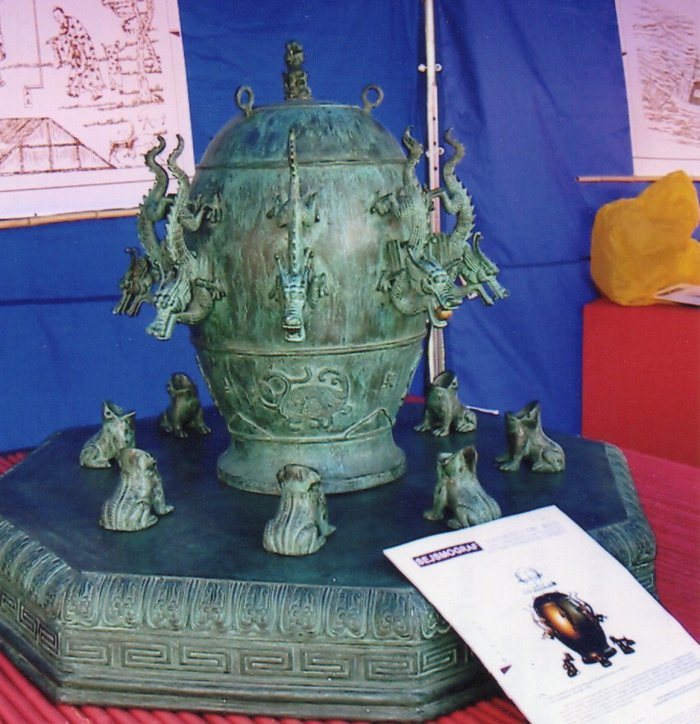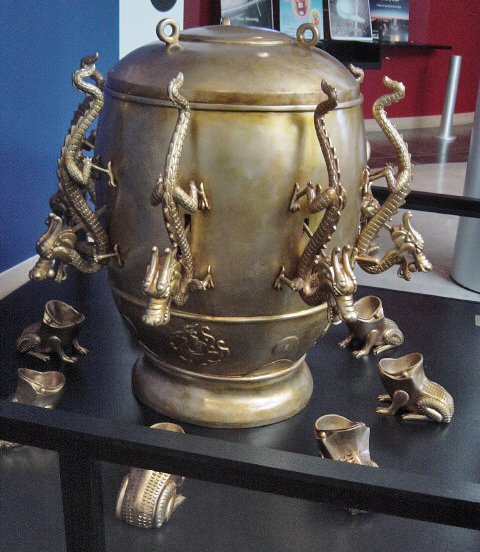Zhang Heng Seismograph Could Record Earth’s Dangerous Movements
A. Sutherland - AncientPages.com - Zhang Heng (A.D. 78 - 139) was one of the world's first scientists to propose that the universe is infinite in space and time.
He was also convinced that the number of dimensions we cannot see with the naked eye is unlimited.
A full-size replica of the first seismograph invented by Zhang Heng during the reign of the Eastern Han Dynasty (ab. CE 130), displayed at the open-air exposition held in Warsaw, Poland (June 2008). Credit: Cyborian - Creative Commons Attribution-Share Alike 4.0
He's considered Leonardo da Vinci of the far East. He made significant contributions to the development of astronomy in ancient China along with 32 works on science, literature, and philosophy, of which Ling Xian, a summary of astronomical theories at the time, and the Map of Ling Xian, are astronomical works.
Among the many impressive inventions of the Chinese scholar Zhang Heng, there is an instrument for testing wind and earth movements.
In 1703, Jean de Hautefeuille, a French physicist, created the first seismograph of modern times. This device allowed scientists to measure earthquakes accurately. However, like in so many other cases, we must remember that what de Hautefeuille really invented was only a rediscovery of a device that the ancients were already familiar with many centuries earlier.
The instrument was invented in 132 A.D. and given the Chinese name Houfeng Didong Yi - or Didong Yi.
The instrument could determine the direction of an earthquake, contrary to popular belief at that time.
A replica of an ancient Chinese Seismograph from the Eastern Han Dynasty (25-220 CE). Credit: Kowloonese - Creative Commons Attribution-Share Alike 3.0
Zhang Heng maintained that earthquakes were not signs of Heaven's anger but natural disasters.
Over the years, there has been scholarly disagreement about the exact scientific principles applied to the seismograph and how precisely the instrument initially worked.
Some Western scholars even suggested that the instrument never existed.
In 2005, a team of Chinese archeologists, seismologists, and experts in mechanical engineering from the Chinese Academy of Sciences, the National Museum, and the China Earthquake Administration - announced that they created a new replica of the Didong Yi instrument - the world's first seismograph.
As the scientists said, the replica is a "historic step" toward complete reconstruction.
"What we are exhibiting is a scientific device, not a toy," said Tian Kai, deputy curator of Henan Museum. "If we put a seismograph that is unable to move or detect on exhibition," Tian said, "we will not only deceive our audience but also show our apathy and irresponsibility towards our nation's splendid cultural legacy."
"As a treasure of our Chinese nation, Didong Yi is an attractive goal for reconstruction to scientists around the globe," Teng said. "If we can't finish the job, it will be our fault."
Postage stamp of The Han Dynasty Chinese scientist and statesman Zhang Heng (78-139 AD). Credit: Public Domain
According to the Book of the Later Han (also known as History of the Later Han), an official Chinese historical text covering the history of the Han Dynasty from 6 to 189, this ancient device was destroyed and no longer exists.
From historical sources, we learn that in 138 A.D., the seismograph accurately records the time and direction of the earthquake that occurred in the Longxi Shire, about 600 kilometers from Luoyang, China's capital at the time.
Was the seismograph also destroyed during this earthquake?
The device, an urn-like instrument with a central pendulum, was made of refined copper in the form of a vase decorated with eight dragons holding balls in their mouth.
The heads of the dragons pointed out the eight directions east, west, north, south, northeast, southeast, northwest, and southwest.
Below the dragons were eight porcelain frogs placed around the vessel. All of them were raising their heads and opening their mouths opposite the dragons' mouths.
The inner side of the seismograph was ingeniously constructed: when an earthquake occurred, an earth tremor would cause the pendulum to lose balance and activate a set of levers inside. Then, one of the eight dragons outside the urn would release the bronze ball held in its mouth. The ball would fall into the mouth of the toad and give off a sound, letting people know when and in which direction an earthquake had occurred.
Based on the description in Zhang Heng's biography, a few attempts have been made to reconstruct this prehistoric Chinese apparatus. Unfortunately, none of the replicas could detect an earthquake.
Will the instrument be able to measure earthquakes one day accurately?
Yet, as far as we know, the seismograph's construction was rather basic. More historical data and simulated analysis will probably be needed to reconstruct this prehistoric piece of technology.
Written by – A. Sutherland AncientPages.com Staff Writer
Updated on March 6, 2023
Copyright © AncientPages.com All rights reserved. This material may not be published, broadcast, rewritten or redistributed in whole or part without the express written permission of AncientPages.com
Expand for referencesReferences:
Robert Temple, The Genius of China
Wang Zhong Qiang, Armillary sphere and seismograph
More From Ancient Pages
-
 On This Day In History: Ensisheim Meteorite Fell To Earth – On Nov 7, 1492
News | Nov 7, 2016
On This Day In History: Ensisheim Meteorite Fell To Earth – On Nov 7, 1492
News | Nov 7, 2016 -
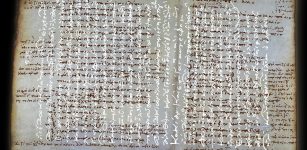 Spectacular Discovery – Scientists Decipher Previously Invisible Texts In Ancient Manuscripts
News | Nov 16, 2013
Spectacular Discovery – Scientists Decipher Previously Invisible Texts In Ancient Manuscripts
News | Nov 16, 2013 -
 Arsinoe II Rose To Power Through Manipulations, Murder, Conspiracies And Became Worshiped As A Goddess
Featured Stories | Apr 26, 2019
Arsinoe II Rose To Power Through Manipulations, Murder, Conspiracies And Became Worshiped As A Goddess
Featured Stories | Apr 26, 2019 -
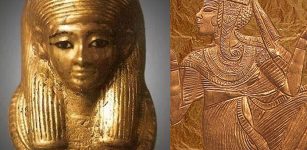 Mystery Of Dakhamunzu And The Zannanza Affair – Was Queen Ankhesenamun Hiding Her Identity?
Featured Stories | Feb 1, 2019
Mystery Of Dakhamunzu And The Zannanza Affair – Was Queen Ankhesenamun Hiding Her Identity?
Featured Stories | Feb 1, 2019 -
 Biblical Mystery Of Urim And Thummim: God’s Puzzling Communication Devices
Biblical Mysteries | Jun 18, 2017
Biblical Mystery Of Urim And Thummim: God’s Puzzling Communication Devices
Biblical Mysteries | Jun 18, 2017 -
 Huge Unknown Ancient Lost World Discovered Inside Giant Sinkhole In China
News | May 19, 2022
Huge Unknown Ancient Lost World Discovered Inside Giant Sinkhole In China
News | May 19, 2022 -
 DNA Study Of Ice Age Survivors Reveals A Surprise About The Gravettian Culture
Archaeology | Mar 1, 2023
DNA Study Of Ice Age Survivors Reveals A Surprise About The Gravettian Culture
Archaeology | Mar 1, 2023 -
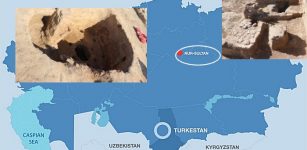 New Historical Finds Near Khoja Ahmed Yassawi Mausoleum In Turkestan – Uncovered
Archaeology | Aug 20, 2020
New Historical Finds Near Khoja Ahmed Yassawi Mausoleum In Turkestan – Uncovered
Archaeology | Aug 20, 2020 -
 Prophetic Dream Revealed Priceless Ancient Treasure That Was Later Stolen Or Destroyed – Was The Discovery Too Dangerous?
Featured Stories | Jul 27, 2018
Prophetic Dream Revealed Priceless Ancient Treasure That Was Later Stolen Or Destroyed – Was The Discovery Too Dangerous?
Featured Stories | Jul 27, 2018 -
 Time Capsule – Best Preserved 3,000-Year-Old Dwelling Ever Found In Britain
Archaeology | Jan 12, 2016
Time Capsule – Best Preserved 3,000-Year-Old Dwelling Ever Found In Britain
Archaeology | Jan 12, 2016 -
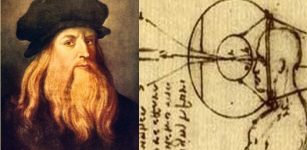 Did Leonardo Da Vinci Invent Contact Lenses In 1508?
Ancient Technology | Dec 10, 2015
Did Leonardo Da Vinci Invent Contact Lenses In 1508?
Ancient Technology | Dec 10, 2015 -
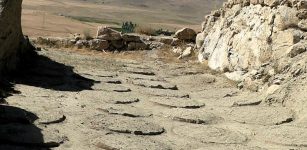 2,800-Year-Old Urartu Jars Uncovered In Eastern Turkey
Civilizations | Sep 9, 2015
2,800-Year-Old Urartu Jars Uncovered In Eastern Turkey
Civilizations | Sep 9, 2015 -
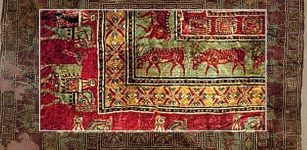 Pazyryk Carpet Found In Scythian Tomb Considered The Oldest Carpet In The World
Artifacts | Oct 5, 2016
Pazyryk Carpet Found In Scythian Tomb Considered The Oldest Carpet In The World
Artifacts | Oct 5, 2016 -
 On This Day In History: ‘Earl of Northumberland’ Thomas Percy Executed Because He Was Catholic – On August 22, 1572
News | Aug 22, 2016
On This Day In History: ‘Earl of Northumberland’ Thomas Percy Executed Because He Was Catholic – On August 22, 1572
News | Aug 22, 2016 -
 Mystery Of The Mandala: The Circle Of Life
Ancient Symbols | Jul 7, 2018
Mystery Of The Mandala: The Circle Of Life
Ancient Symbols | Jul 7, 2018 -
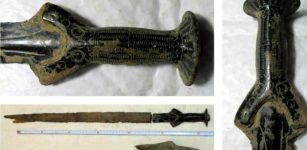 Rare 3,300-Year-Old Sword Accidentally Discovered In Jesenicko, Czech Republic
Archaeology | Nov 9, 2020
Rare 3,300-Year-Old Sword Accidentally Discovered In Jesenicko, Czech Republic
Archaeology | Nov 9, 2020 -
 Sleipnir: Eight-Legged Horse With Supernatural Strength That Belonged To God Odin
Featured Stories | Mar 21, 2017
Sleipnir: Eight-Legged Horse With Supernatural Strength That Belonged To God Odin
Featured Stories | Mar 21, 2017 -
 Discovery Of Stone Age Textiles Sheds New Light On The History Of Clothes Making
Archaeology | Nov 9, 2021
Discovery Of Stone Age Textiles Sheds New Light On The History Of Clothes Making
Archaeology | Nov 9, 2021 -
 Old Royal Crime – Dark Riddle Of Young Princes In The Tower Of London
Featured Stories | Jun 14, 2020
Old Royal Crime – Dark Riddle Of Young Princes In The Tower Of London
Featured Stories | Jun 14, 2020 -
 Where Does The Expression “Pyrrhic Victory” Come From?
Ancient History Facts | Apr 18, 2018
Where Does The Expression “Pyrrhic Victory” Come From?
Ancient History Facts | Apr 18, 2018

